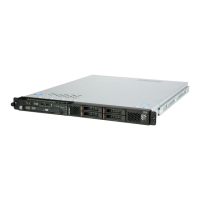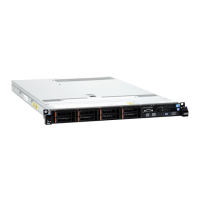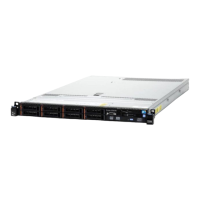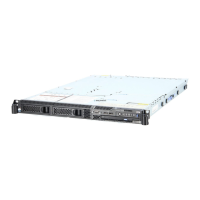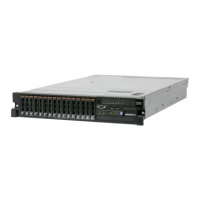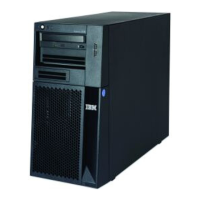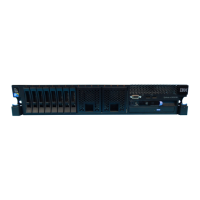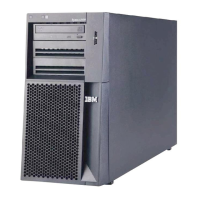System pulse LEDs
The following LEDs are on the system board and monitors the system power-on
and power-off sequencing and boot progress (see “System-board LEDs” on page
21 for the location of these LEDs):
Table 8. System pulse LEDs
LED Description Action
Enclosure management heartbeat power-on and power-off sequencing.
1. If the LED blinks at 1Hz, it is
functioning properly and no action
is necessary.
2. If the LED is not blinking, (trained
service technician only) replace
the system board.
IMM heartbeat IMM heartbeat boot process. The following steps describe the
different stages of the IMM heartbeat
sequencing process.
1. When this LED is blinking fast
(approximately 4Hz), this
indicates, that the IMM code is in
the loading process.
2. When this LED goes off
momentarily, this indicates that
the IMM code has loaded
completely.
3. When this LED goes off
momentarily and then starts
blinking slowing (approximately
1Hz), this indicates that IMM is
fully operational. You can now
press the power-control button to
power-on the server.
4. If this LED does not blink within
30 seconds of connecting a power
source to the server, complete the
following steps:
a. (Trained service technician
only) use the IMM recovery
jumper to recover the firmware
(see “System-board switches
and jumpers” on page 18).
b. (Trained service technician
only) replace the system
board.
Diagnostic programs and messages
The diagnostic programs are the primary method of testing the major components
of the server. As you run the diagnostic programs, text messages are displayed on
the screen and are saved in the test log. A diagnostic text message indicates that a
problem has been detected and provides the action you should take as a result of
the text message.
Make sure that the server has the latest version of the diagnostic programs. To
download the latest version, complete the following steps.
Chapter 3. Diagnostics 115
